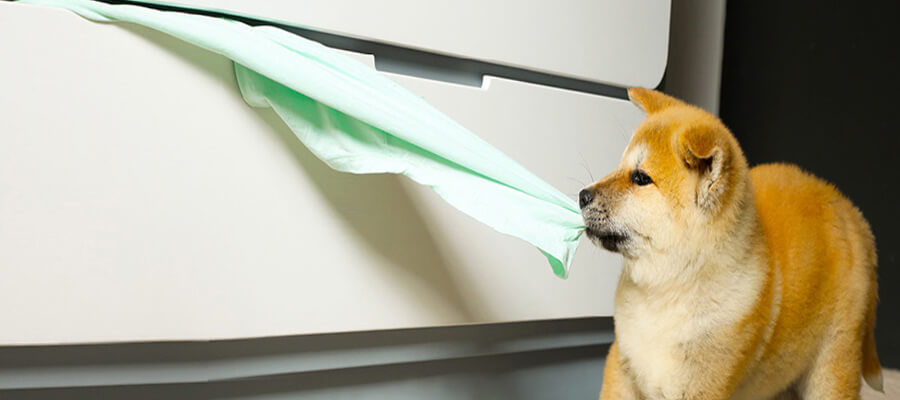
How to Safeguard Your Dog from Household Hazards
Safeguard Your Dog from Household Hazards
As a responsible dog owner, ensuring your furry friend’s safety at home is crucial. While we may not always be able to prevent accidents from happening, understanding common household hazards and taking proactive measures can significantly reduce risks. This guide will provide practical tips and strategies to safeguard your dog from household dangers and create a secure environment for them.
1. Identify and Remove Toxic Plants
Many household plants can be toxic to dogs:
- Common Toxic Plants: Familiarize yourself with common household plants that are harmful, such as lilies, azaleas, and philodendrons. Keep these plants out of reach or consider replacing them with dog-safe alternatives like spider plants or Boston ferns.
- Educate Your Family: Teach family members about the dangers of these plants and ensure that guests are aware, as they may unknowingly bring harmful flora into your home.
2. Secure Cleaning Supplies and Chemicals
Household cleaning products can pose significant risks:
Essentials for Your Newly Adopted Pet
Welcoming a shelter pet into your life is a beautiful journey. Here are some handpicked items to help your new friend feel safe, loved, and right at home:
- Storage Solutions: Store all cleaning supplies, chemicals, and other hazardous materials in locked cabinets or high shelves that your dog cannot access.
- Pet-Safe Alternatives: Consider using pet-safe cleaning products to minimize risks. Many brands offer natural, non-toxic options that are safe for use around pets.
3. Manage Food Hazards
Certain human foods are harmful or even fatal to dogs:
- Keep Foods Out of Reach: Ensure that all human foods, especially toxic ones like chocolate, grapes, onions, and garlic, are stored securely and out of reach. Use child-proof containers if necessary.
- Educate Your Family: Make sure everyone in your household understands what foods are dangerous to dogs and that they do not feed them from the table or give them leftovers.
4. Secure Cords and Wires
Electrical hazards can be easily overlooked:
- Hide Cords: Use cord organizers or cover cords with protective tubing to prevent your dog from chewing on them. This helps reduce the risk of electric shock or strangulation.
- Block Access: Keep your dog away from areas with exposed wires and cords, such as entertainment centers or home offices.
5. Create a Safe Space
Designate a specific area in your home as a dog-safe zone:
- Dog-Proofing: Remove any small objects, choking hazards, or items that can be easily knocked over. Use baby gates to restrict access to certain areas, such as staircases or rooms with fragile items.
- Comfort Items: Ensure your dog has a comfortable bed, toys, and water in this safe space so they feel secure.
6. Be Cautious with Furniture
Furniture can pose risks for curious dogs:
- Sturdy Furniture: Ensure that furniture is sturdy and won’t tip over if your dog climbs or jumps on it. Avoid items with sharp edges that can cause injury.
- Avoid Climbing: Discourage your dog from jumping on furniture where they might fall. Training commands such as “off” can be helpful in preventing accidents.
7. Secure Garbage and Recycling Bins
Dogs are often attracted to the smell of food waste:
- Lid Locks: Use garbage cans with secure lids or even child-proof locks to keep your dog from rummaging through trash. This helps prevent ingestion of harmful items.
- Avoid Compost Bins: Keep compost bins securely closed, as many composted foods are toxic to dogs.
8. Check for Small Objects
Small items can be choking hazards:
- Regular Clean-Up: Frequently check your living space for small objects like coins, rubber bands, and paperclips that could be swallowed or cause choking.
- Teach “Leave It”: Training your dog to respond to commands like “leave it” can help prevent them from picking up harmful items.
9. Monitor Outdoor Access
If you have a yard, ensure it is safe for your dog:
- Fencing: Ensure your yard is securely fenced to prevent escape and keep out potential dangers. Regularly inspect for gaps or weak spots.
- Pesticides and Fertilizers: Avoid using chemicals in your yard that could harm your dog. Opt for pet-safe alternatives and ensure your dog stays off the grass after treatment.
10. Regular Vet Check-Ups
Preventive health care is key:
- Routine Check-Ups: Regular vet visits can help detect potential health issues before they become serious. Discuss any concerns about your dog’s environment and well-being with your veterinarian.
- Vaccinations and Preventatives: Keep your dog’s vaccinations and preventive medications up to date, especially if they spend a lot of time outdoors.
Conclusion
Safeguarding your dog from household hazards requires diligence, education, and proactive measures. By identifying potential dangers, securing harmful substances, and creating a safe environment, you can protect your furry friend and allow them to thrive in your home. Regularly reassess your living space and remain vigilant about your dog's safety, ensuring that your home remains a loving and secure haven for your beloved pet.
Affiliate Products
We may earn a small commission when you shop through our links — it helps us keep sharing love and care for every dog out there, at no extra cost to you.
Up to 75% Discount

Dog Collar with Health Monitoring
BUY NOW »
Up to 55% Discount

Luxury Faux Furhuge Napping Bed
BUY NOW »

